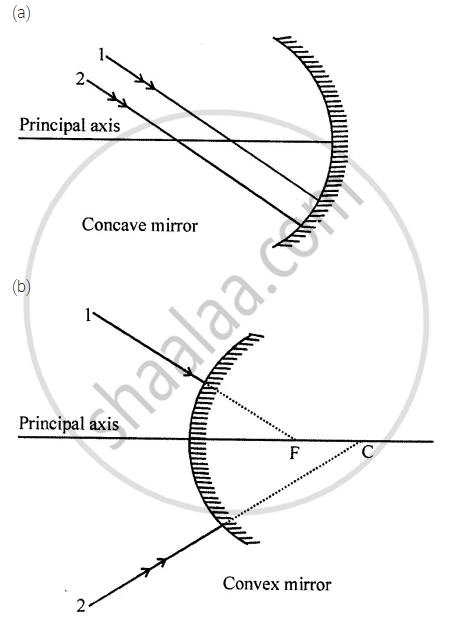Advertisements
Advertisements
Question
The angle between an incident ray and the plane mirror is 30°. The total angle between the incident ray and reflected ray will be:
(a) 30°
(b) 60°
(c) 90°
(d) 120°
Solution
(b) 120o
Since, angle of incidence = 90o - angle between plane mirror and incident ray = 90o - 30o = 60o
and according to first law of reflection, angle of incidence = angle of reflection = 60o
Total angle between incident ray and reflected ray = 60o + 60o = 120o .
APPEARS IN
RELATED QUESTIONS
An object 4 cm in height, is placed at 15 cm in front of a concave mirror of focal length 10 cm. At what distance from the mirror should a screen be placed to obtain a sharp image of the object. Calculate the height of the image.
A ray of light is incident on a plane mirror making an angle of 90° with the mirror surface. The angle of reflection for this ray of light will be:
(a) 45°
(b) 90°
(c) 0°
(d) 60°
A concave mirror has a focal length of 4 cm and an object 2 cm tall is placed 9 cm away from it. Find the nature, position and size of the image formed.
Complete the following diagrams in figure by drawing the reflected rays for the incident rays 1 and 2 if F is the focus and C is the centre of curvature.

Draw a ray diagram to show the formation of image of an object placed between the focus and centre of curvature of a concave mirror. State the position, size and nature of the image.
In the following diagram. MM' is a concave mirror and AB is an object. Draw on your answer-sheet a ray diagram to show the formation of image of this object.
A student has focused the image of a candle flame on a white screen using a concave mirror. The situation is as given below:
Length of the flame = 1.5 cm
Distance of flame from the mirror = 18 cm
If the flame is perpendicular to the principal axis of the mirror, then calculate the following:
- Distance of the image from the mirror
- Length of the image
If the distance between the mirror and the flame is reduced to 10 cm, then what would be observed on the screen? Draw ray diagram to justify your answer for this situation.
A student has to determine the focal length of a concave mirror by obtaining the image of a distant object on a screen. For getting best result he should focus
(A) a distant tree or an electric pole
(B) a well-illuminated distant building
(C) well-lit grills of the nearest window
(D) a burning candle laced at the distant edge of the laboratory table
In which equipment/s do you find ___________________
For a real object, which of the following can produce a real image?
